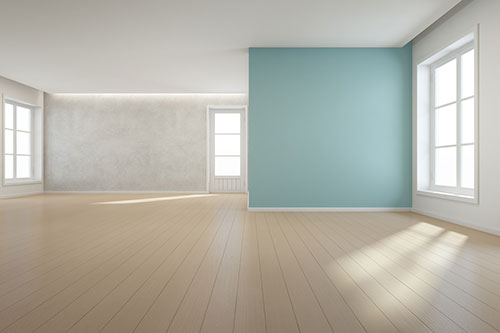White-boxing is becoming a popular tactic for selling luxury homes. Should your sellers consider it for their properties? Here’s what you should know about this growing real estate trend.
What Is White-boxing?
To generate greater interest from prospective buyers, most sellers go to great lengths to stage their homes with furniture and strategic décor. This is typically a great way to help buyers visualize themselves living in a property. It can also be an effective strategy for highlighting a home’s strongest features and downplaying its imperfections.
In certain situations, however, staging can be counterproductive. For instance, if a buyer is looking for a blank canvas, furniture and pictures can actually interfere with their vision for the space.
In essence, white-boxing is the total opposite of staging. Instead of strategically arranging furniture and accessories, the seller opens the door to a clean, empty home, allowing buyers to dream up their own layouts and see the house’s potential. Although it may seem counterproductive at first glance, white-boxing allows prospective home buyers to focus on the potential of a residence instead of getting distracted by interior decor which may not fit their distinctive tastes.
When White-Boxing Works
White-boxing has become a prominent trend in luxury property markets, where there is an increased focus on designer-ready properties rather than move-in ready homes. In these settings, white-boxing allows prospective buyers to visualize how they can customize a property to suit their unique preferences. At the same time, it also eliminates the cost of removing existing interior features since the seller has already paid to ensure that the property is completely bare. For certain buyers, this is a valuable selling point that prevents them from having to pay someone to rip out existing materials that aren’t to their taste.
Just a few years ago, it would have been relatively rare to find an empty luxury home in any U.S. market. These days, however, it’s become a common occurrence, especially in luxury markets such as Los Angeles and New York City, where desirable locations and stunning views are common selling points for high-end homes.
When White-Boxing Doesn’t Work
While white-boxing can be a powerful strategy for attracting buyers to luxury properties; it isn’t suitable for every situation. Since it inevitably delays a buyer’s move-in date, white-boxing isn’t going to appeal to buyers who are more interested in move-in-ready residences instead of designer-ready properties. White-boxing is also not typically effective for properties that have noticeable flaws or design issues, which are more likely to stand out without staging.
With that said, if there is something that makes a property stand out – such as breathtaking views, a coveted location or a top-ranked school district – white-boxing can be very effective. The tactic can also be a good way to make older properties look newer and smaller properties appear larger.
Above all else, however, sellers should consider cost. For luxury buyers who are willing to spend high dollar for properties, existing furniture and amenities aren’t going to mean as much. For these people, properties typically aren’t perfect until they are personal.
2-10 HBW offers comprehensive Systems and Appliances Home Warranties to help protect your clients from unexpected repair and replacement costs. Contact us to learn more.








